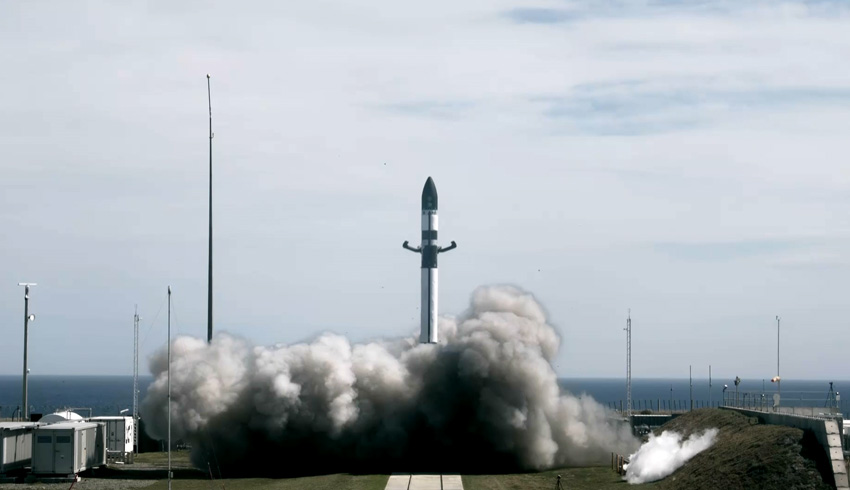The increased payload mass capacity has primarily been made possible through advances in the battery technology that powers Rutherford’s electric pumps. Since Rocket Lab’s maiden launch in 2017, the Electron launch vehicle has boasted a payload lift capacity of 150 kilograms to 500 kilometres to sun-synchronous orbits (SSO), with a maximum lift capacity of 225 kilograms total to lower orbits.
Thanks to the performance increase, Electron is now capable of lifting 200 kilograms to 500 kilometres SSO and up to 300 kilograms to lower orbits.
The performance improvements make it possible to launch more payload to low-Earth orbit (LEO), lunar, and interplanetary destinations on expendable Electron missions, while offsetting the additional mass of recovery systems added to Electron for missions slated for recovery and re-flight.
Peter Beck, Rocket Lab founder and CEO, said, "When we created Electron, we set out to develop a launch vehicle that small satellite operators would turn to when they needed a dedicated ride to a unique orbit on their schedule. We’re proud to be delivering that capability and continuing to evolve our launch and satellite services to meet the market’s ever-changing needs."
The increased performance also means that customers selecting Rocket Lab’s Photon spacecraft as a satellite bus now have up to 180 kilograms available as pure payload instrument mass, enabling more complex missions in LEO and beyond.
With robust power systems, high-performance propulsion, secure data handling, and precise pointing and accuracy, Rocket Lab’s family of LEO and interplanetary Photon buses offer customised spacecraft solutions to accommodate a wide range of small satellite missions.
"Electron remains right-sized for the small sat market, and releasing additional performance is about providing our customers with even more flexibility on the same proven vehicle they have come to rely on," Beck added.
Rocket Lab has now launched 130 Rutherford engines to space and carried out more than 1,000 engine test fires on the ground, equipping engineers with the wealth of data and experience needed to deliver extra performance from the engines and their batteries.
Rocket Lab’s Rutherford engines are the world’s first 3D printed and electric pump-fed engines to be launched to space. Rocket Lab began development on Rutherford in 2013 and the first engine was test fired the same year, marking the beginning of a new generation in rocket propulsion.
Rutherford engines are used as first and second stage engines on the Electron launch vehicle. There are nine Rutherford engines on Electron’s first stage and a single vacuum optimised version on the second stage.
The sea level versions on Electron’s first stage now produce 25,000 newtons of thrust (up from 24,500 newtons), with a specific impulse of 311 s (3.05 km/s).
The vacuum optimised version operating on Electron’s second stage now produces a max thrust of 25,800 newtons of thrust and has a specific impulse of 343 s (3.36 km/s).
Instead of being powered by traditional gas turbine pumps, Rutherford uses an entirely new propulsion cycle of brushless DC electric motors and high-performance lithium polymer batteries to drive its propellant pumps.
This cuts down on much of the complex turbomachinery typically required for gas generator cycle engines, meaning that the Rutherford is simpler to build than a traditional engine but can achieve 90 per cent efficiency.
The Rutherford engine’s production scalability is facilitated by additively manufactured, or 3D printed, primary components. With a 3D printed combustion chamber, injectors, pumps, and main propellant valves, Rutherford has the most 3D printed components of any rocket engine in the world. These primary components can be printed in 24 hours, drastically reducing production timelines.

